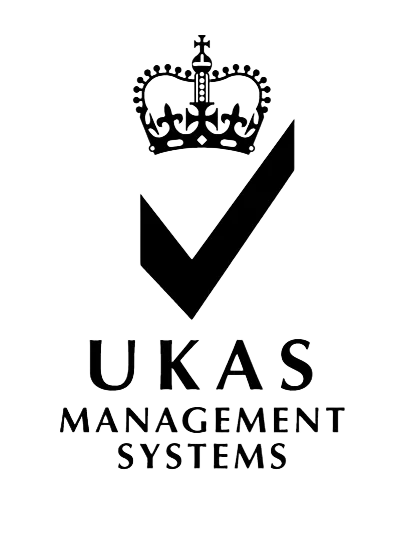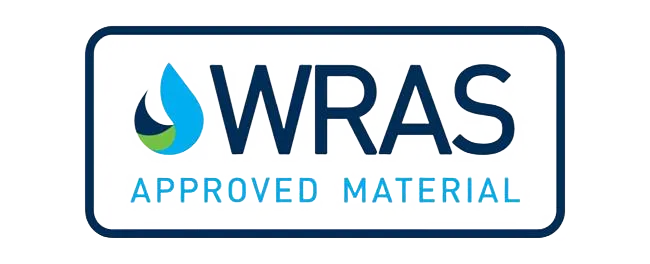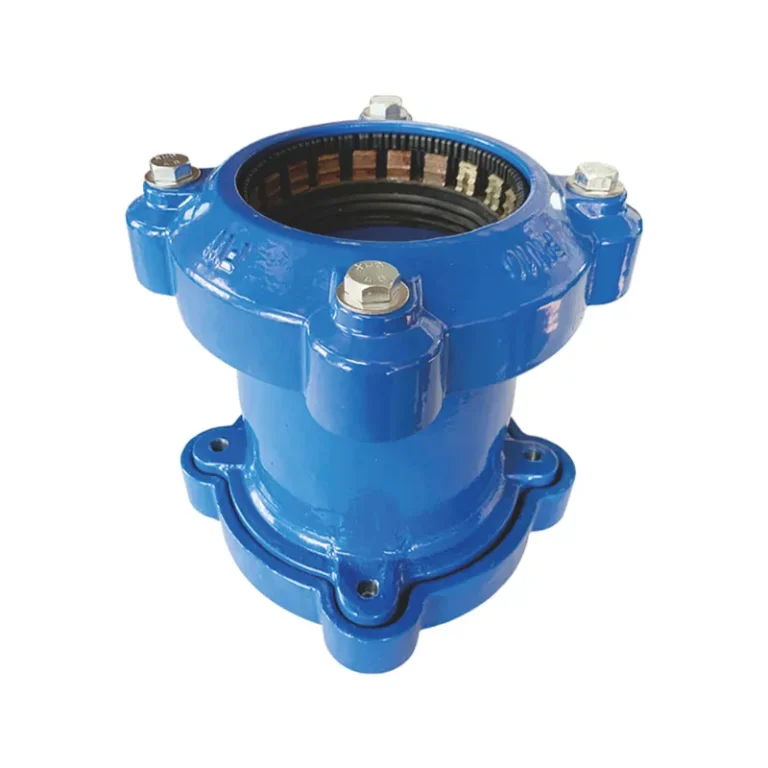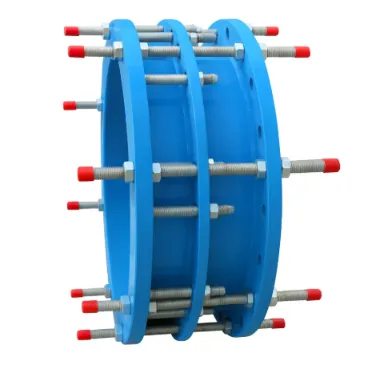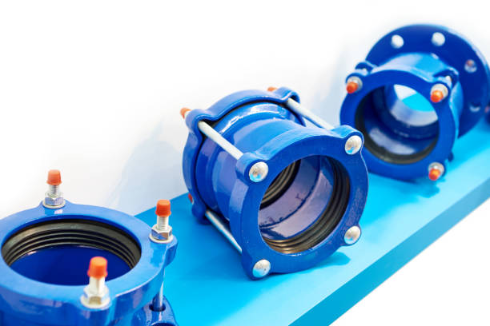
Polyethylene (PE) pipes are widely used in water supply, wastewater management, and industrial pipelines. But connecting them securely has always been a challenge. Two common solutions stand out: restrained couplings and traditional flange adaptors. Both serve the same purpose, joining pipes and ensuring leak free performance, but they perform very differently when you look closer.
This article dives deep into the comparison. We’ll explore installation speed, pressure handling, durability, and cost effectiveness, so engineers, contractors, and project managers can make better choices for their next pipeline project.
Understanding the Basics
What Is a Traditional Flange Adaptor?
A flange adaptor is a device used to connect PE pipes to flanged equipment or other pipeline sections. It relies on bolted flanges and gaskets to create a secure joint. While reliable, the method can be time consuming because it involves aligning flanges, tightening multiple bolts, and ensuring gasket sealing.
What Is a Restrained Coupling?
A restrained coupling is a mechanical joint designed specifically for PE pipes. Instead of relying solely on bolts, it uses:
Metal inserts for axial restraint
Independent clamping on both sides
Rubber rings (EPDM, SBR, NBR) for leak tight sealing
This design speeds up installation and minimizes the risk of pipe pullout under pressure.
Installation Speed: Time Is Money
One of the first things engineers ask is, “How fast can this be installed?”
Traditional Flange Adaptors:
Require precise flange alignment
Multiple bolts need tightening (sometimes dozens per joint)
Gasket positioning adds another step
Installation can take significantly longer, especially on large OD pipes
Restrained Couplings:
Slide onto the pipe ends easily
Independent clamping locks pipes quickly
No need for special alignment tools
Can cut installation time by 30-40% compared to flange adaptors
In real project terms, on a 5 km water pipeline, this difference can save several days of labor and reduce heavy machinery rental costs.
Pressure Handling: Can It Take the Load?
Pipelines don’t just sit quietly, they deal with surge pressure, flow variations, and sometimes rough handling during installation.
| Feature | Restrained Coupling | Flange Adaptor |
|---|---|---|
| Working Pressure | PN10 / PN16 | PN10 / PN16 |
| Axial Movement Resistance | Strong, due to mechanical locking | Relies on bolt tension |
| Angle Deviation | ± 6° flexibility | Very limited tolerance |
| Risk of Leakage | Low if rubber rings are intact | Higher if gasket alignment fails |
Restrained couplings handle minor misalignments better. For example, when laying pipes across uneven terrain, that ±6° flexibility makes a big difference. Flange adaptors, on the other hand, can fail if flanges aren’t perfectly aligned.
Durability: Built for Harsh Conditions
Durability comes down to materials and coatings.
Restrained Couplings:
Flange pipes and gland flanges made from ductile iron GGG50 (EN1563)
Coated with Fusion Bond Epoxy (EN14901) or equivalent
Corrosion resistant, suitable for potable water, recycled water, and sewage
Performs well in temperatures -10°C to +70°C
Flange Adaptors:
Usually similar ductile iron or steel
Protection depends heavily on paint or epoxy quality
Bolts and nuts are more exposed to corrosion over time
In environments with high humidity, sewage gases, or aggressive soil conditions, restrained couplings often outlast flange adaptors.
Cost Effectiveness: Looking Beyond the Price Tag
Many buyers get stuck on the upfront price. Yes, flange adaptors sometimes cost less per unit. But total project cost tells another story.
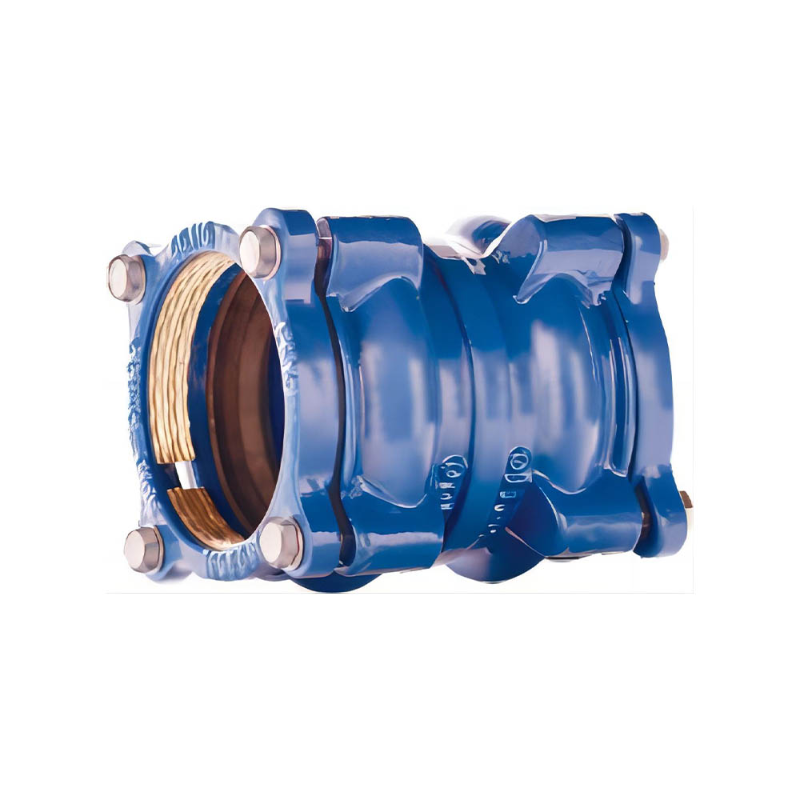
Restrained Couplings Save Costs By:
Faster installation, less labor and machinery expense
Lower risk of rework due to misalignment
Longer service life with reduced maintenance
Ability to absorb angular deflections, avoiding costly on site adjustments
Flange Adaptors May Cost More Over Time Due To:
Frequent gasket replacements
Higher risk of leakage repairs
Extra manpower needed for installation
In one municipal water project we reviewed, switching from flange adaptors to restrained couplings cut overall connection costs by 15% despite slightly higher initial purchase price.
Where Each Solution Works Best
Use Restrained Couplings When:
Speed is critical emergency repairs, large scale installations
The soil is unstable or pipe movement is likely
You need resistance against both potable water and sewage corrosion
Use Flange Adaptors When:
You are connecting PE pipe to an existing flanged valve or pump
The pipeline is short, and installation time is less of a concern
Budget is extremely tight, and future maintenance is acceptable
A Note on Conflex Joints
At this point, you might be wondering where to source reliable restrained couplings. Conflex Joints specializes in manufacturing industrial pipeline connection and repair products, including restrained couplings, flange adaptors, and flexible joints. The company also provides customized solutions tailored to unique project needs yes, sometimes the drawings you send over get turned into real products.
Besides restrained couplings, Conflex Joints also produces:Dismantling joints, Flanged adaptors, Repair clamps for emergency pipeline leaks
Having one supplier for multiple connection products simplifies procurement and ensures compatibility across a project.
Example
Imagine a contractor laying 200 mm OD PE pipe for a recycled water network:
With flange adaptors, the crew spends almost 20 minutes per joint aligning flanges and tightening bolts.
With restrained couplings, the same joint is completed in 12 minutes, with less chance of misalignment.
Over 100 joints, that’s nearly 13 hours of labor saved, enough to finish a section a day earlier.
Sometimes the difference between finishing a project on time or running into penalty fees comes down to details like this.
Conclusion
Both restrained couplings and traditional flange adaptors have their place in PE pipeline systems. Flange adaptors are tried and true, but restrained couplings bring speed, flexibility, and long term reliability that many modern projects demand.
For contractors, municipalities, and industries managing large scale water or sewage pipelines, restrained couplings often prove to be the more cost effective and durable choice.
FAQs on Restrained Coupling vs. Traditional Flange Adaptors
1. Which is easier to install on PE pipelines: restrained coupling or flange adaptor?
Restrained couplings are faster and easier to install because they don’t require perfect flange alignment. Flange adaptors, while reliable, take longer due to multiple bolts and gaskets.
2. Do restrained couplings handle pressure better than flange adaptors?
Both can handle PN10/PN16 pressures, but restrained couplings perform better under misalignment and axial movement, reducing the risk of leakage.
3. Are restrained couplings more durable than traditional flange adaptors?
Yes, mainly due to epoxy coating and ductile iron design. They resist corrosion and perform well in sewage or recycled water systems where flange adaptors often need more maintenance.
4. Which option is more cost effective for large projects?
Restrained couplings generally save costs over time thanks to faster installation and fewer maintenance issues. Flange adaptors may appear cheaper upfront but can increase labor and repair expenses.
5. Can I use both solutions in the same pipeline system?
Absolutely. Many engineers combine restrained couplings for long runs of PE pipe and flange adaptors when connecting to valves, pumps, or other flanged equipment.


